 | In the Field
| In the Field

IFA Excavations at Selinunte
Summary of Excavation Results, 2017
Following a study season in 2016, the project’s tenth excavation campaign was conducted in the main urban sanctuary between May and June of 2017, thanks to the support of the Institute of Fine Arts, NYU, in collaboration with the Archeological Park of Selinunte. This season produced important new findings beneath the current topsoil of the main room, or cella, of Temple R. An incredibly well-preserved stratigraphic column was found [Figure 1], with far fewer disruptions from later phases, contributing significantly to our knowledge of the different use phases of our area, and, more generally, to our understanding of ritual actions associated with the construction of temples in the ancient Greek world.
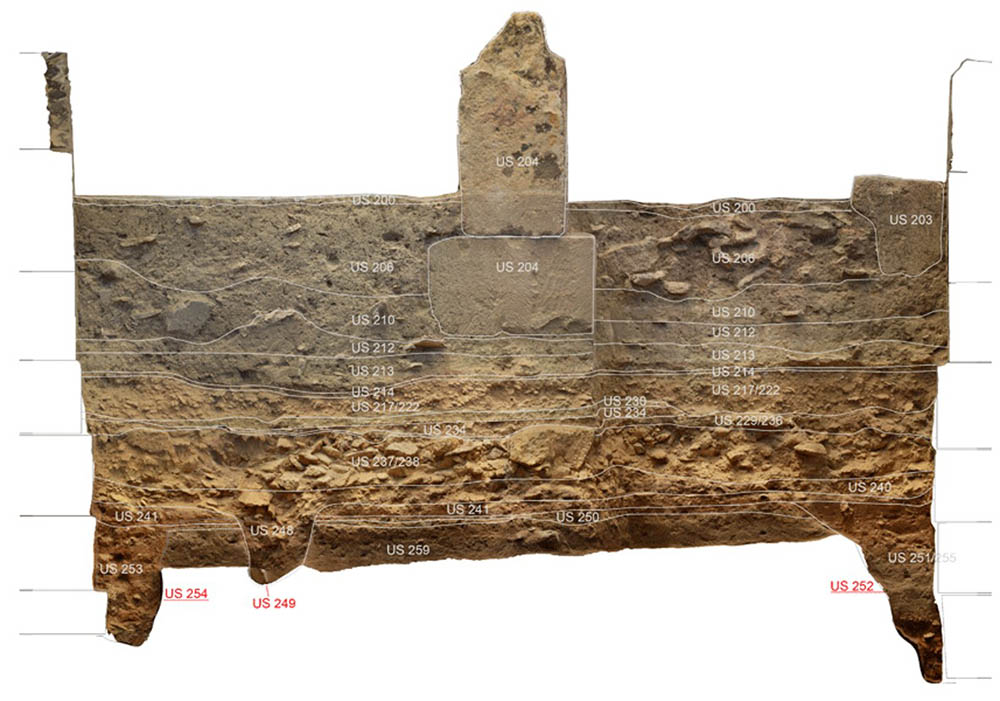
Figure 1. Western section of Trench Q, with stratigraphic sequence labeled. © Institute of Fine Arts, NYU.
Work this season consisted of the excavation of Trench Q, at the center of the cella of Temple R between the two extant pilasters visible above the topsoil. By the end of this season, we excavated the Hellenistic, Classical, and Archaic layers, eventually reaching the level corresponding to the time of the foundation of Selinus, ca. 628 BCE.
Our work opened with the excavation of the Hellenistic fill (ca. 300 BCE) which has completely sealed the Archaic and Classical phases inside the temple. This fill consisted—like in Trenches O and P—of earth and stones, along with a large number of transport amphoras, mainly placed near the bottom of the deposit [Figure 2], and tiles and architectural terracottas, mainly at the top. This fill also included a significant amount of material related to the life of the sanctuary in the Archaic and Classical periods, including several fragments of architectural terracottas [Figure 3], terracotta figurines, votive metal tools including a sickle, the forearm of a kouros made of Parian marble, and another fragment of an Attic white-ground lekythos in the style of Douris featuring Eros and a youth.
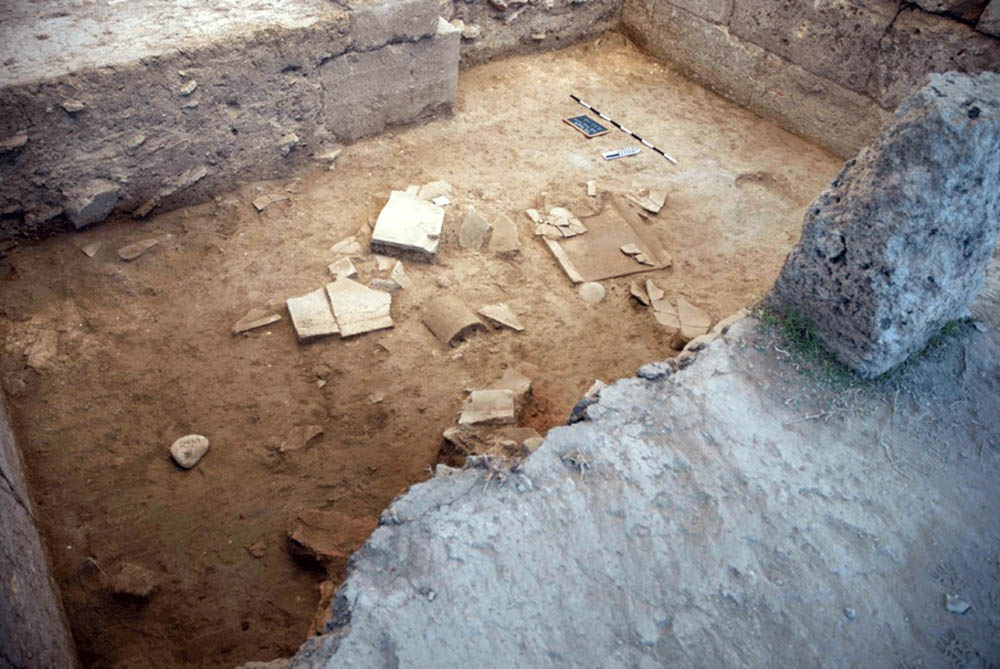
Figure 2. View of terracotta tiles laid at the bottom of the Hellenistic fill, following the removal of the upper layers of the stratum. © Institute of Fine Arts, NYU.
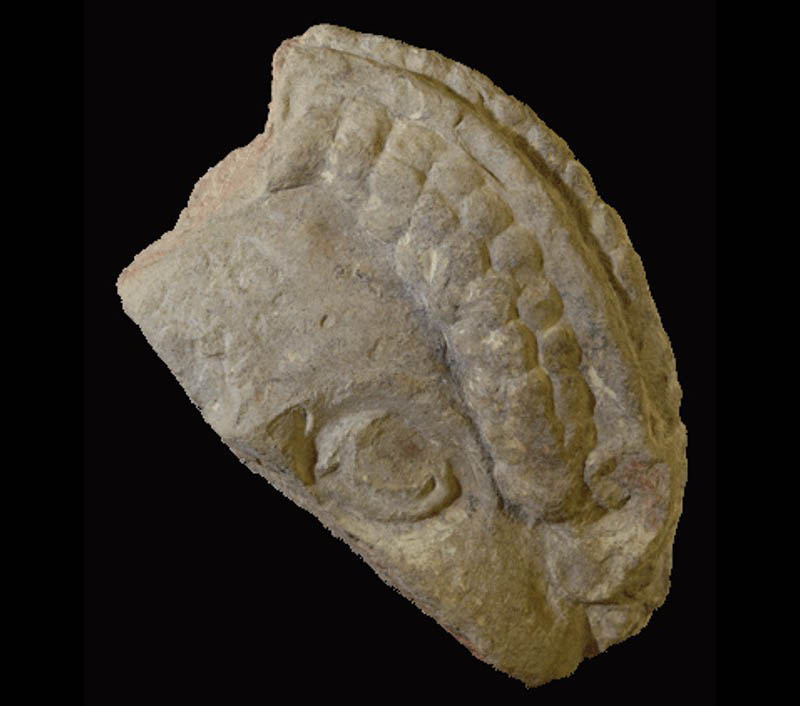
Figure 3. Terracotta Gorgon antefix. © Institute of Fine Arts, NYU.
The Hellenistic fill sealed the Archaic and Classical levels across the entirety of the trench. It was thus possible to identify the floors and floor levels associated with Temple R’s main phases, including the clay floor from the original construction in 590–580 BCE, the new floor of ca. 500 BCE, which appears to have been covered by a fine layer of white stucco, and the floor belonging to the late fifth century renovation of the temple after its partial destruction in 409 BCE. For all these phases we were able to identify a series of votive dedications and ritual actions made immediately before laying each floor.
Particularly significant, in this regard, was the discovery of part of the foundation deposit associated with the original construction of Temple R. Before laying the clay floor, the builders and/or other members of the community feasted. Burning across the center of the cella suggests roasting occurred within the structure itself, with the remains placed along the sides of the walls, as attested by piglet bones within a cup placed upside down [Figure 4]. A number of votive offerings were then deposited, including pottery, weapons, and jewelry [Figures 5a-b]. Part of the same deposit was found in 2012, and we can now expect to find more of it in future campaigns. It is significant that we not only found in this foundation deposit a large number of objects, but particularly that we can precisely map their location in relation to the rest of the deposit and the building.
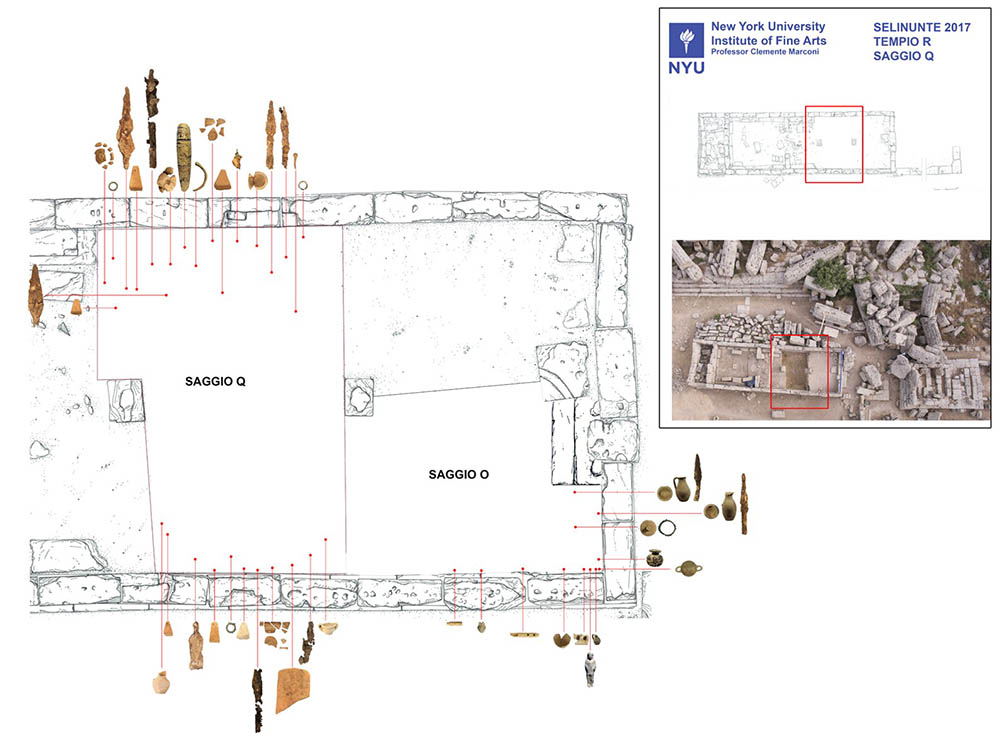
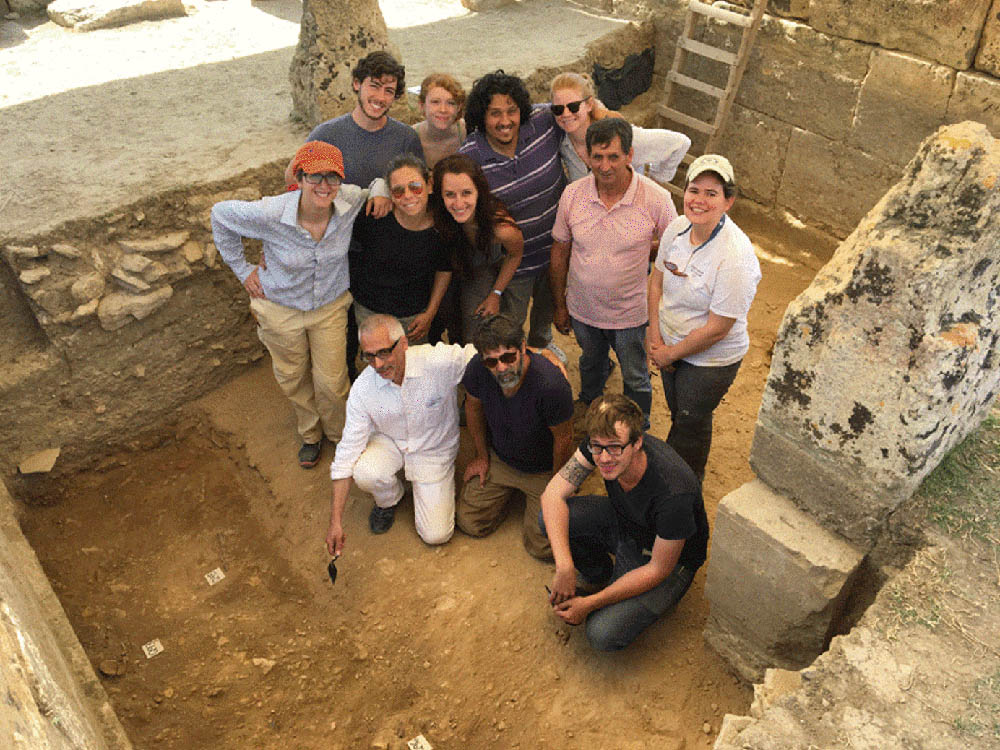
Figures 5a and 5b. Trench Q with foundation deposit still in situ; the excavation team at the time of the discovery. © Institute of Fine Arts, NYU.
The most significant discovery this summer came from the level underneath the foundations of Temple R. Here, as elsewhere in our excavations inside and outside of Temple R, we found the layer associated with the first generation of the Greek colony’s life. This summer, this layer contained a significant amount of pottery, including vases from Megara Hyblaea (Selinus’ mother city), but also three iron spearheads, remnants of spears planted blade-first into the ground, two of which crossed [Figure 6]. These weapons were clearly a form of votive offering, perhaps to the deity to which the future Temple R was dedicated (we know from the inscription of Temple G and the weapons dedicated at Malophoros that both Demeter and Kore were closely associated with warfare at Selinus). They are also a clear symbol of appropriation of the new land by the first generation of colonists.

Figure 6. Iron spearheads planted blade-first into the ground. © Institute of Fine Arts, NYU.
Clemente Marconi (director) and Rosalia Pumo (co-director), and Andrew Farinholt Ward (field director)